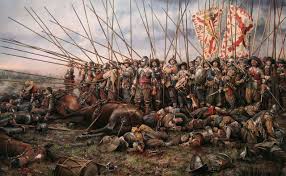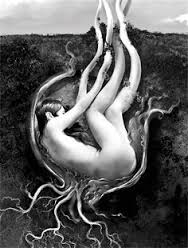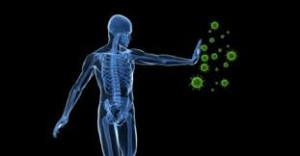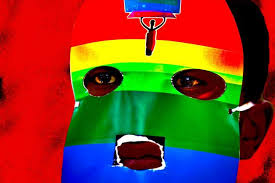Paranoia is extremely interesting because it shows the ways in which private beliefs can distort events that connect the individual with other people. The events are “distorted.” yet while the paranoid is convinced that those events are valid, this does not change other people’s perception of the same happenings.
Paranoia is most commonly associated with intoxication and withdrawal symptoms from drugs, including alcohol and cocaine. However, paranoia is seen in a wide range of people for many different reasons. Paranoia can be a feature of another mental illness, like anxiety or depression, but most commonly occurs in psychotic disorders like schizophrenia and paranoid personality disorder. The more severe the mental illness is, the less likely the said person is going to realize that they are experiencing paranoia instead of threat from people, or even the world.
Alternatively, elderly people suffering from illnesses like dementia can experience paranoia as a symptom of their illness. This is due to the way the brain is altered throughout the illness. Paranoia will usually start with suspicious delusions that the person suffering from Alzheimer’s experiences; they may imagine that their family members are stealing from them, or that someone is following them. As family members, it can make it difficult to interact with the person with Alzheimer’s (you can take a look at these tips on Alzheimer’s Communication if you’re struggling with this) and it can be even more difficult to calm the person down than those suffering from mental illness or drug abuse. Unfortunately, treating paranoia in those with Alzheimer’s is hard due to the alterations of the brain constantly.
Whatever the case, paranoia takes many different forms and impacts many different people. Paranoia does not care for whoever it takes a hold on, and it’s not something that is easily fought off.
What I want to emphasize here is the paranoid’s misinterpretation of innocuous personal or mass events, and to stress the ways in which physical events can be put together symbolically, so that from them a reality can be created that is almost part physical and part dream.
We must of course interpret events in a personal manner. We create them. Yet there is also a meeting ground of more or less shared physical encounters, a sense plateau that offers firm-enough footing for the agreement of a mass-shared world. With most mental aberrations, we are dealing with people whose private symbols are so heavily thrust over prime sense data that even those data sometimes become almost invisible. These individuals often use the physical world in the way that most people use the dream world, so that for them it is difficult to distinguish a private and a publicly-shared reality.
Many such people are highly creative and imaginative. Often, however, they have less of a solid foundation than others in dealing with a mass-shared reality, and so they attempt to impose their own private symbols upon the world, or to form a completely private world. I am speaking in general terms now, and in those terms such people are leery of human relationships. Each person forms his or her own reality, and yet that personal reality must also be shared with others, and must be affected by the reality of others.
As creatures dwelling in time and space, our senses provide us with highly specific data, and with a cohesive-enough physical reality. Each person may react to the seasons in a very personal manner, and yet we all share those natural events. They provide a framework for experience. It is up to the conscious mind to interpret sense events as clearly and concisely as possible. This allows for the necessary freedom of action for psychological and physical mobility. We are an imaginative species, and so the physical world is colored, charged, by our own imaginative projections, and powered by the great sweep of the emotions. But when we are confused or upset, it is an excellent idea to return our attention to the natural world as it appears at any given moment — to sense its effect upon us as separate from our own projections.
We form our own reality. Yet if we are in the Northeast in the wintertime, we had better be experiencing a physical winter, or we are far divorced from primary sense data.
The paranoid has certain other beliefs. Let us take a hypothetical individual — one who is convinced he has a healthy body, and is proud of mental stability. Let us call this friend Paul.
Paul [for his own reasons] may decide that his body is out to get him and punish him, rather than say, the FBI. He may symbolically pick out an organ or a function, and he will misinterpret many body events in the same way that another may misinterpret mass events. Any public service announcements, so-called, publicizing symptoms connected with his sensitive area, will immediately alarm him. He will consciously and unconsciously focus upon that [art of the body,] anticipating its malfunction. Our friend can indeed alter the reality of his body.
Paul will interpret such body events in a negative fashion, and as threatening, so that some quite normal sensations will serve the same functions as a fear of policemen, for example. If he keeps this up long enough, he will indeed strain a portion of the body, and by telling others about it he will gradually begin to affect not only his personal world, but that part of the mass world with which he has contact: It will be known that he has an ulcer, or whatever. In each case we are dealing with a misinterpretation of basic sense data.
When I say that a person misinterprets sense data, I mean that the fine balance between mind and matter becomes overstrained in one direction. There are, then, certain events that connect the world. Though when everything’s said and done these events come from outside of the world’s order, nevertheless they appear as constants within it. Their reality is the result of the most precise balancing of forces so that certain mental events appear quite real, and others are peripheral. We have dusk and dawn. If in the middle of the night, and fully awake, we believe it is sunrise in physical terms, and cannot differentiate between our personal reality and the physical one, then that balance is disturbed.
The paranoid organizes the psychological world about his/her obsession, for such it is, and he/she cuts everything out that does not apply, until all conforms to his/her beliefs. An examination of unprejudiced sense data at any point would at any time bring him/her relief.
Paranoia can be a very serious mental condition, that if untreated, may develop into something that inhibits an individual’s quality of life severely. An individual who is either suffering from this or knows someone who is may seek out help and assistance to possibly treat this. Forms of treatment could be the traditional rote of therapy and a doctor, or it might be through alternative medicines such as CBD gummies and other alternative healing therapies, that might be helpful.
Regradless of what option is chosen as a route for possible treatment, it is advised to seek out the advice of a medical professional like a doctor, so as to get some sound advice and treatment if an individual suffering from paranoia should ever need it in the future.
.


































































































